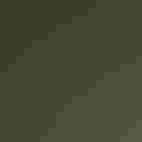Anna’s Hummingbird
At a Glance
This hardy little bird is a permanent resident along our Pacific Coast, staying through the winter in many areas where no other hummingbirds are present. More vocal than most hummingbirds, Anna's Hummingbird males have a buzzy song, often given while perched. In recent decades the species has expanded its range, probably helped along by flowers and feeders in suburban gardens; it now nests north to British Columbia and east to Arizona.
All bird guide text and rangemaps adapted from by Kenn Kaufman© 1996, used by permission of Houghton Mifflin Harcourt Publishing Company. All rights reserved.
Category
Hummingbirds
IUCN Status
Least Concern
Habitat
Arroyos and Canyons, Desert and Arid Habitats, Forests and Woodlands, Shrublands, Savannas, and Thickets, Urban and Suburban Habitats
Region
Alaska and The North, California, Northwest, Rocky Mountains, Southeast, Southwest, Texas, Western Canada
Behavior
Flitter, Hovering, Rapid Wingbeats
Population
9.600.000
Range & Identification
Migration & Range Maps
Southwestern birds perform some east-west migration, with many Arizona birds moving west to California in mid-spring after nesting, returning in late summer. Others may be permanent residents.
Description
Sexes similar — Length: 4 in (10 cm); wingspan 4.7 in (12 cm); weight: 0.1-0.2 oz (3-6 g). The adult male Anna's Hummingbird has rose red on throat and crown (looks black or gold in some lights). Female plain green above, dingy gray below, often with red spots on throat. More stocky than Black-chinned or Costa's; unlike them, tends to hold tail still while hovering.
Size
About the size of a Sparrow
Color
Black, Gray, Green, Pink, Red, White
Wing Shape
Narrow, Rounded, Short
Tail Shape
Notched, Rounded, Short, Square-tipped
Songs and Calls
A sharp chip and a rapid chee-chee-chee-chee-chee.
Call Pattern
Flat
Call Type
Buzz, Chirp/Chip, Hi
Habitat
Gardens, chaparral, open woods. Found in a wide variety of habitats within its range, including streamside groves, chaparral, open oak woodland, coastal sage scrub, gardens, city parks. Most common in lowlands and lower mountain slopes, but may wander to high mountain meadows in late summer.
Sign up for Ě˝»¨ľ«Ńˇ's newsletter to learn more about birds like the Anna's Hummingbird
Behavior
Eggs
2. White. Incubation is by female only, 14-19 days.
Young
Female feeds the young, sticking her bill deep into their mouths and regurgitating tiny insects, perhaps mixed with nectar. Age of young at first flight about 18-23 days.
Feeding Behavior
At flowers, usually feeds while hovering, extending its bill and long tongue deep into the center of the flower. At feeders, may either hover or perch. To catch small insects, may fly out and take them in midair, or hover to pluck them from foliage.
Diet
Mostly nectar and insects. Takes nectar from flowers, and will feed on tiny insects as well. Will also feed on sugar-water mixtures in hummingbird feeders.
Nesting
Anna's Hummingbird may begin nesting in December, or even earlier. In courtship display, male hovers in midair, giving buzzy song, then flies much higher; he then dives steeply toward the female, making a loud explosive popping sound at the bottom of the dive. Also buzzes back and forth in front of female in short shuttling flights. Nest site is variable, usually on a branch of tree or shrub, sometimes in vines, on wires, under eaves. Usually 4-25 ft above ground, can be lower or higher. Nest (built by female) is a compact cup of plant fibers and spider webs, lined with plant down and sometimes feathers, the outside camouflaged with lichens.
Conservation
Conservation Status
Since the 1950s, Anna's Hummingbird has expanded its breeding range both north and east. Very common in much of its range, adapting well to suburban areas.
Climate Threats Facing the Anna's Hummingbird
Choose a temperature scenario below to see which threats will affect this species as warming increases. The same climate change-driven threats that put birds at risk will affect other wildlife and people, too.










